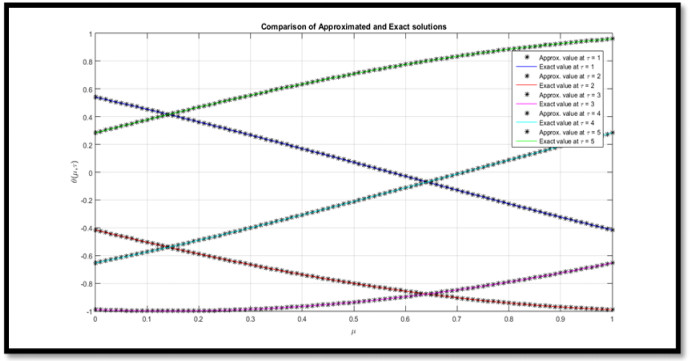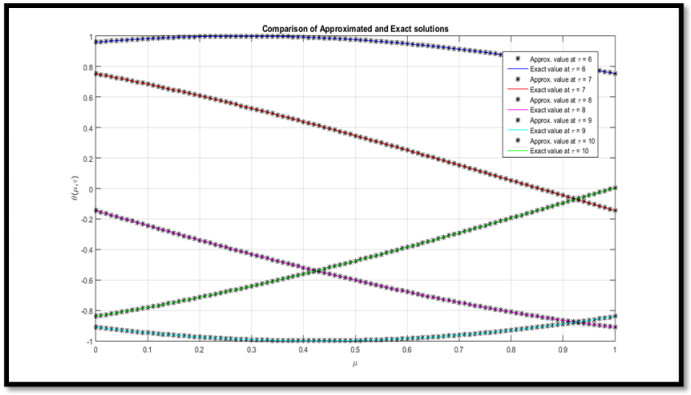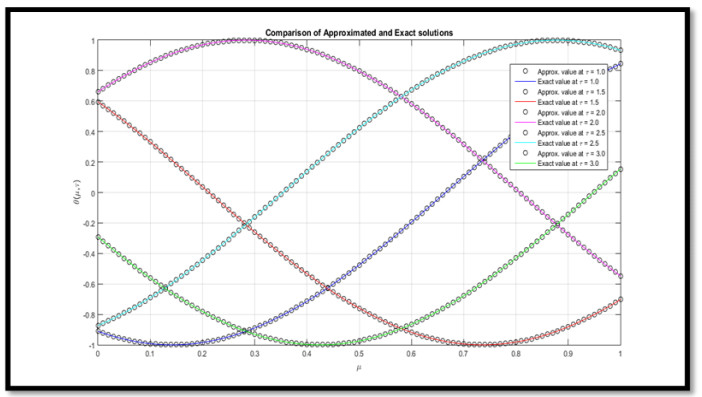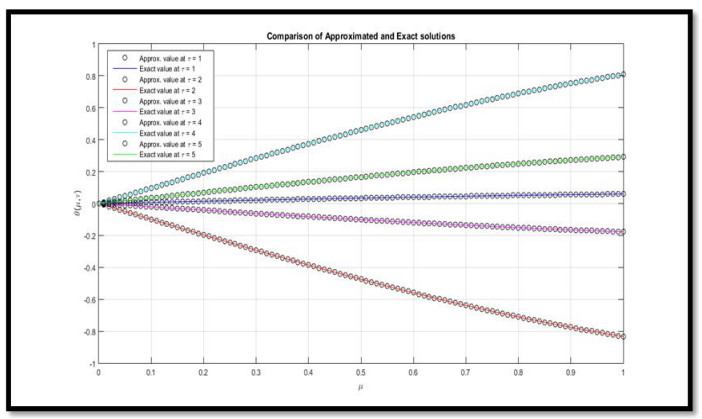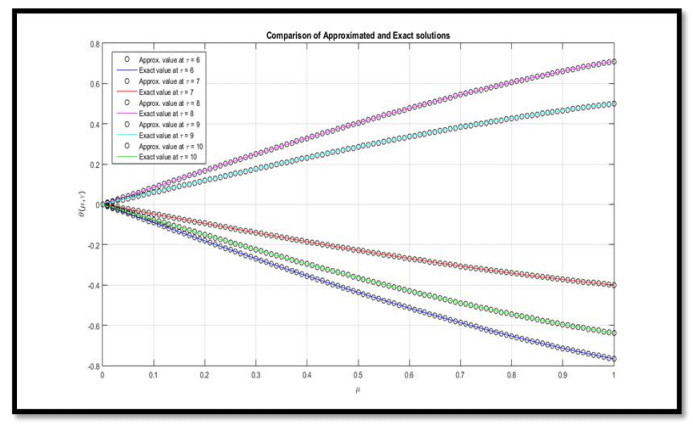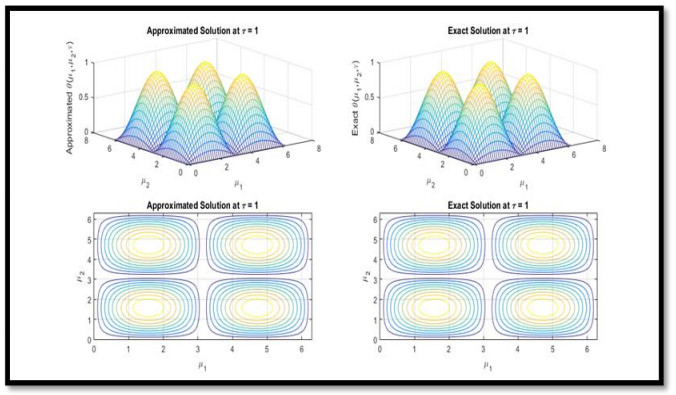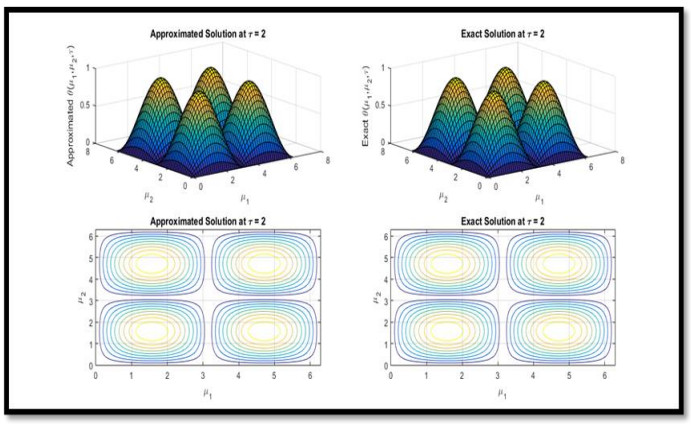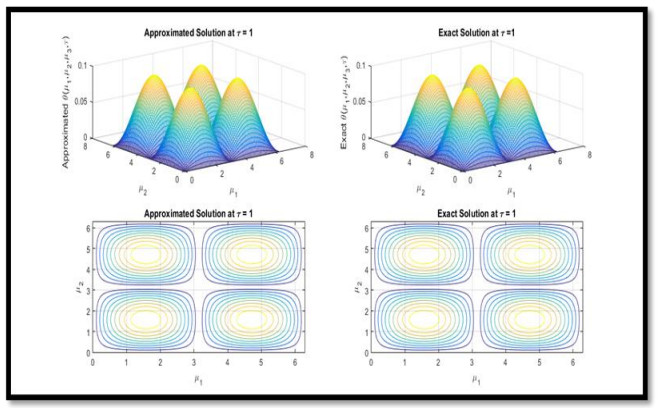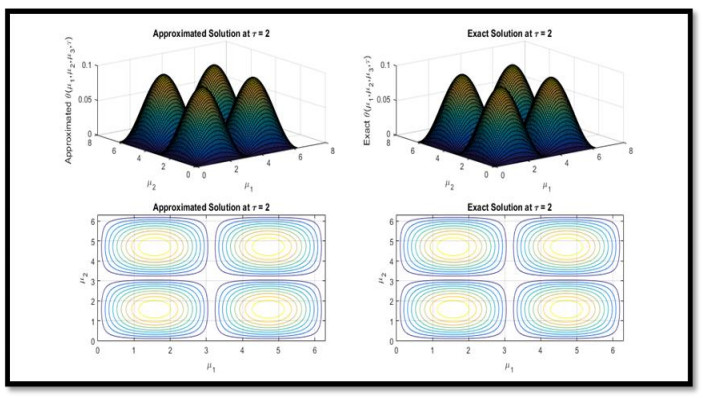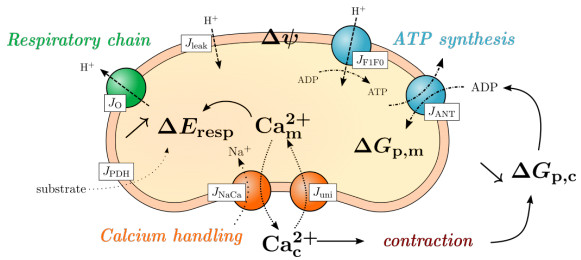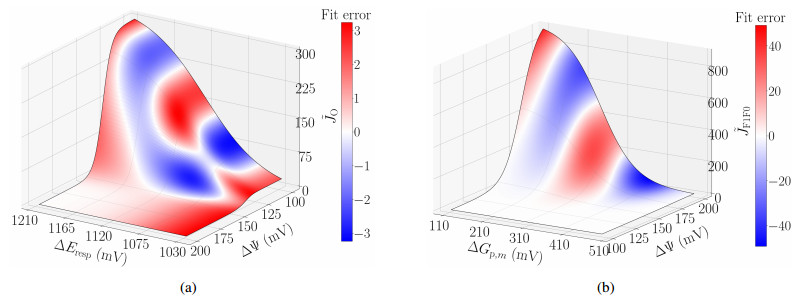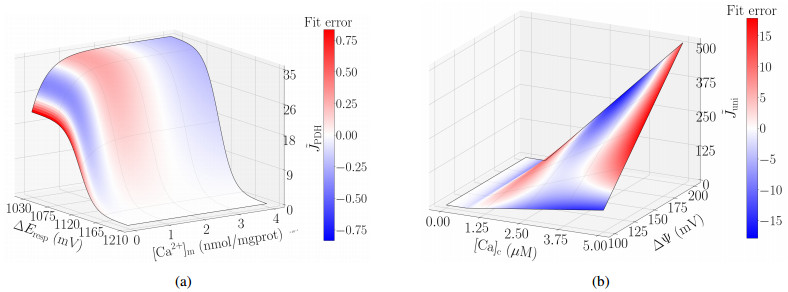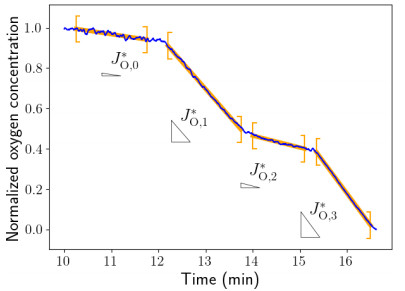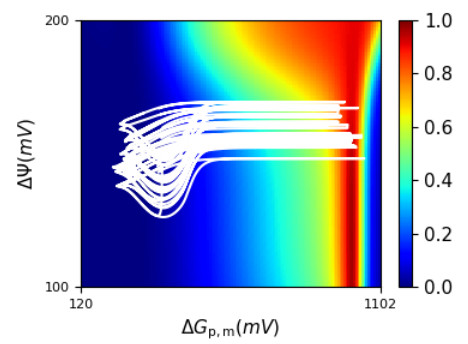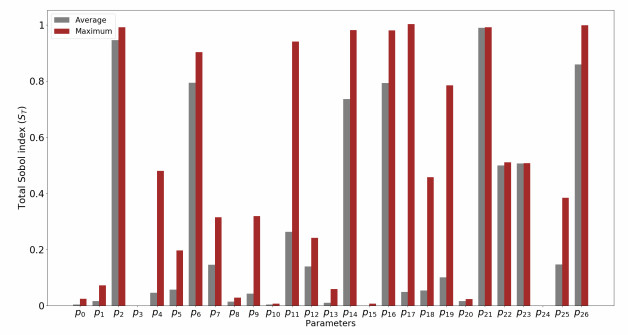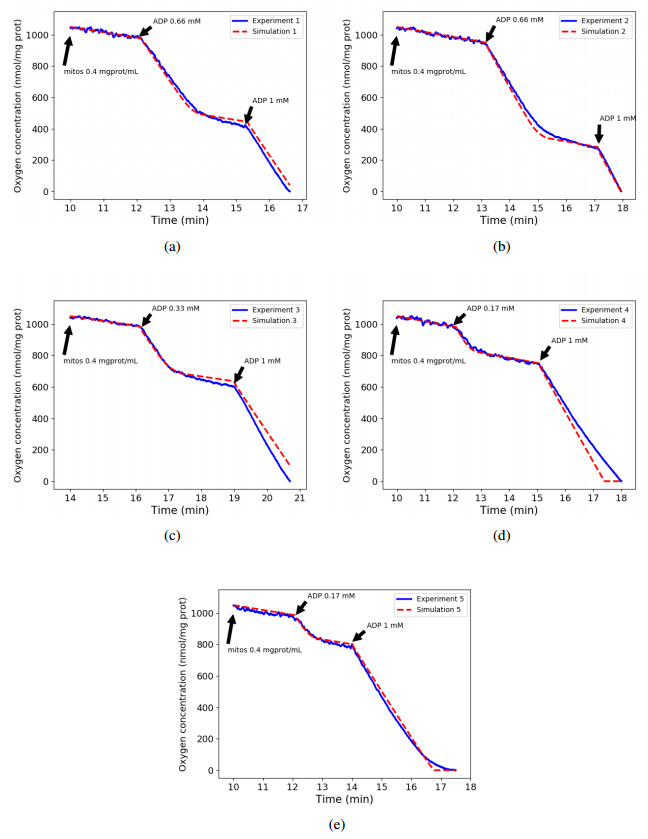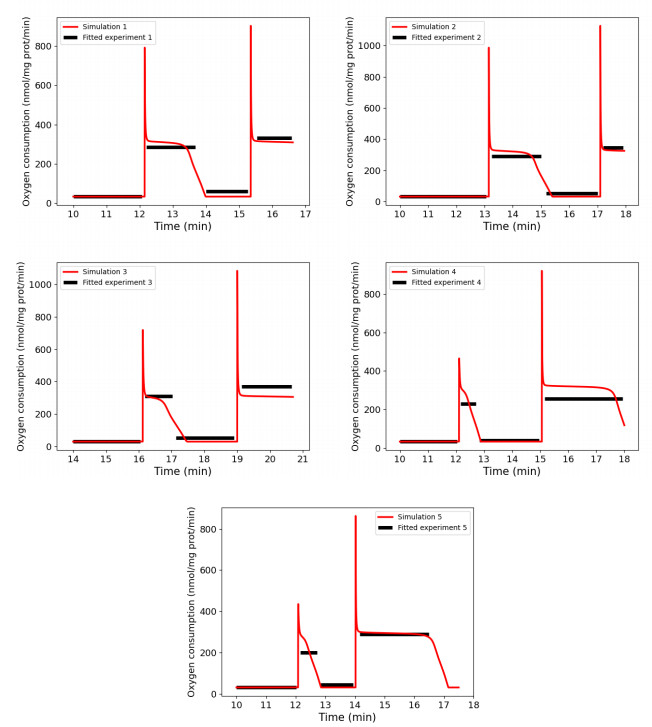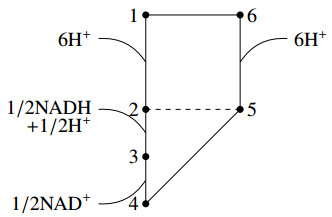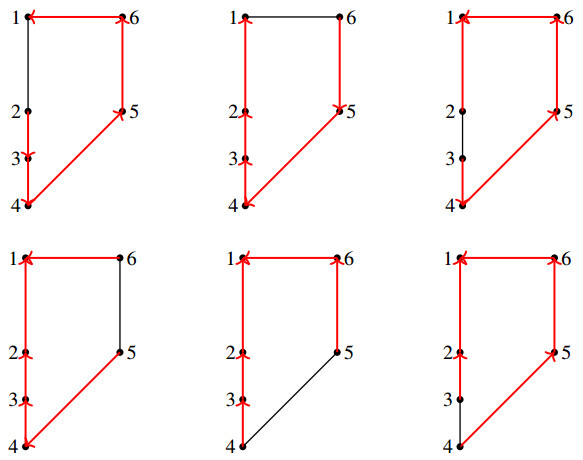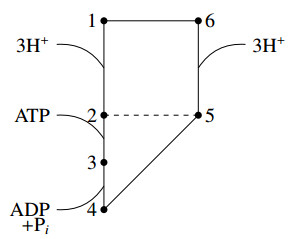1.
Introduction
Fractional calculus is a modification of the notion of differentiation and integration of arbitrary orders [1,2,3,4,5,6,7]. As there exist various prototypes in engineering and sciences, fractional calculus has attained the researcher's interest. Multiple models in numerous aspects such as; physics, biology, and engineering are tackled as per fractional differential and integral calculus. Some examples are electrochemistry, signal processing, diffusion, finance, acoustic, plasma physics, image processing, and others [8,9,10,11,12,13].
Integral transforms are notified as one of the most suitable approaches to tackle models regarding applied mathematics, mathematical physics, engineering, and some other branches as well. The primary motivation is to deal with the provided mathematical model via any suitable integral transform and to retrieve the associated outcome in the best possible approach.
Via an appropriate selection of integral transform, the differential and integral equations can be transformed into an algebraic equations system, which can be easily tackled.
Various integral transforms and integral transform-based approaches are generated and incorporated for this purpose, such as; Laplace transform [14], Sumudu transform [15], Elzaki transform [16], and Natural transform [17], and many others.
Definition 1: Shehu transform of the function θ(τ) is defined over the following functions [18,19,20].
Definition 2: Shehu transform of function ϵ(τ) is defined as follows [18,19,20]:
Definition 3: Inverse Shehu transform is defined as follows [18,19,20]:
Where s, u are the Shehu transform variables. α∈R.
Definition 4: [18,19,20]
Definition 5: Linearity property of Shehu transform [18,19,20]:
Definition 6: Linearity property of inverse Shehu transform [18,19,20]:
If
then
Definition 7: Shehu transform of Caputo fractional derivative [C.F.D.] [20,21]:
Definition 8: Mittag-Leffler function considered for two parameters was given in [22,23,24].
Where E1,1(n)=exp(n) and E2,1(n2)=cos(n).
In Tables 1 and 2 basic formulae regarding Shehu transform and inverse Shehu transform are provided.
1D Non-linear time-fractional Schrödinger equation.
2D Non-linear time-fractional Schrödinger equation.
3D Non-linear time-fractional Schrödinger equation.
One of the well-known models in mathematical physics is Schr¨odinger equation model. There exist various implementations in numerous branches, such as; non-linear optics [25], mean-field theory of Bose-Einstein condensates [26,27], and plasma physics [28]. One emerging aspect of quantum physics is considered as fractional Schr¨odinger equation; which is associated with the notion of non-local quantum phenomena.
Naber [29] notified time-fractional Schr¨odinger equation regarding Caputo derivative. Wang and Xu [30] elaborated on the linear Schr¨odinger equation regarding the space-fractional and time-fractional aspects as well as tackled the models via integral transform approach. Due to the existence of numerous implementations of the time-fractional Schr¨odinger equation; various researchers have worked in this field. Regarding this, novel analytical and numerical regimes have been generated for the time-fractional Schr¨odinger equation [31,32,33,34]. Hemida et al. [35] implemented HAM to provide the approximated results for the space-time fractional Schr¨odinger equation. More work related to fractional Schr¨odinger equation is provided in [36,37,38]. Other noteworthy work in this regard is notified as [39,40,41,42].
The main advantage of ADM is that it does not rely upon perturbation or linearization or any discretization. Therefore, the actual outcome of the model remains unchanged. Discretization of variables is not demanded, which is a difficult and challenging approach. It means that the obtained results are error-free, which occurred because of discretization. Furthermore, it is accurate in finding the approximated and exact solutions of the non-linear prototypes. Such methods can be implemented to the diversified differential equations such as; integro-differential equations, differential-algebraic equations, differential-difference equations, as well as some functional equations, eigenvalue problems, and Stochastic system problems.
The main idea of the present study is to concentrate on the implementation of Shehu ADM for attaining the exact solution to the Schr¨odinger equations in various dimensions. Some latest research regarding this field is provided on [43,44,45,46,47].
Novelty and significance of the paper
There are several schemes observed in the literature that deal with fractional Schr¨odinger equation in one, two, or three dimensions, but rare methods are provided that tackles fractional Schr¨odinger equation in all one, two, and three dimensions. Therefore, the authors have focused on developing a technique that proves the validity of the approximated-analytical solution of the mentioned equations in one, two, and three dimensions.
An iterative scheme is developed in the present research regarding the solution of fractional Schr¨odinger equation in one, two, and three dimensions. The present scheme is easy to implement and needs no complex programming regarding numerical discretization. Developing the numerical programs for the fractional PDEs is not an easy task; therefore, developing such iterative schemes is the need of time to find the approximated-analytical solutions. There exist several transforms provided in the literature, but from the calculation aspect, some transforms are easy to implement, and some are not. Shehu ADM is noticed as one of the easiest methods to implement integral transform among all existing integral transforms; as in the case of Shehu ADM, no perturbation parameter is required. Via literature, it is observed that fractional Schrödinger equations have never been solved in one, two, and three dimensions with the aid of a single integral transform. Therefore, due to the importance of such equations, in this research, concentration is focused upon the solution for the same, which retains the novelty of the study. Furthermore, convergence analyses are also incorporated in the article.
Motivation of the study
In the present research, an iterative regime is developed and incorporated named Shehu ADM regarding the solution of fractional Schr¨odinger equation in one, two, and three dimensions. The present regime is easy to implement and needs no complex calculation in the process of numerical discretization. Generating the numerical programs to deal with the fractional PDEs is cumbersome; therefore, generating such novel iterative regimes is demanded to fetch the approximated-analytical solutions.
There exist numerous transforms in the literature, but as per the calculation aspect, some transforms are easy to incorporate, but some are not. Shehu transform ADM is notified as one of the easiest methods. From an exploration of the literature, it is noticed that fractional Schrödinger equations are rarely solved in one, two, and three dimensions with the aid of a single integral transform-based method. Therefore, in this research, the focus is on finding the solution for the same, which contains the novelty of the research. Moreover, error analysis and convergence analysis are also elaborated in this article.
In the present paper, the convergence of the method is checked numerically. Convergence is affirmed via Tables 3–8. As per Tables 3–8, it is observed that on increasing the number of grid points the L∞ error norm got reduced rapidly, which is robust proof of the convergence of the generated semi-analytical techniques.
2.
Outline of the paper
● The present paper is divided into different sections and subsections.
● In Section 3, Implementation of the Shehu ADM is developed for various kinds of fractional Schr¨odinger equations.
● In Sub-section 3.1, the general formula is generated for 1D time-fractional Schrödinger equation.
● In Sub-section 3.2, the general formula is generated for 2D time-fractional Schrödinger equation.
● In Sub-section 3.3, the general formula is generated for 3D time-fractional Schrödinger equation.
● In Section 4, six examples are elaborated to validate the efficiency and efficacy of the developed regime.
● In Section 5, graphical analysis, error analysis, and convergence analysis is notified.
● Section 6 is provided as the concluding remarks.
3.
Implementation of the proposed regime
3.1. Implementation of the scheme on 1D time-fractional Schr¨odinger equation
Applying Shehu transform upon Eq (1):
Where,
3.2. Implementation of the scheme on 2D time-fractional Schr¨odinger equation
Applying Shehu transform upon Eq (2):
Where,
3.3. Implementation of the scheme on 3D time-fractional Schr¨odinger equation
Applying Shehu transform upon Eq (3):
Where,
4.
Examples and derivation
In the present section, six examples are tested to ensure the validity of the proposed regime, Examples 1–4 are associated with 1D time-fractional Schr¨odinger. Example 5 is provided regarding 2D time-fractional Schrödinger. Example 6 is associated with 3D time-fractional Schrödinger equation. In all the provided cases, approximated and exact profiles are generated.
Example 1: Considered 1D non-linear time-fractional Schr¨odinger as follows [36]:
I.C.: θ(μ,0)=eiμ.
Applying Shehu transform upon Eq (22):
Where
Considered, ξ=1:
Considered n=0:
Where,
Considered n=1:
Where,
Considered α=1:
Example 2: Considered 1D linear time-fractional Schr¨odinger equation as follows [37]:
I.C.: θ(μ,0)=e3iμ
Applying Shehu transform in Eq (23):
Considered ξ=1:
Considered n=0:
Considered n=1:
Considered α=1:
Example 3: Considered 1D linear time-fractional Schr¨odinger equation as follows [37]:
I.C.: θ(μ,0)=1+cosh(2μ)
Applying Shehu transform upon Eq (24):
Where
Considered ξ=1:
Considered n=0:
Considered n=1:
Considered α=1:
Example 4: Considered 1D non-linear time-fractional Schr¨odinger equation as follows [38]:
I.C.: u(μ,0)=sinμ
Applying Shehu transform upon Eq (25):
Considered ξ=1:
Considered n=0:
Where,
Considered n=1:
Where
Considered α=1:
Example 5: Considered 2D non-linear time-fractional Schr¨odinger equation as follows [38]:
where μ1,μ2∈[0,2π]×[0,2π].
I.C.: θ(μ1,μ2,0)=sinμ1sinμ2
Applying Shehu transform in Eq (26):
Considered ξ=1:
Considered n=0:
Where
and
Considered n=1:
Where,
Considered α=1:
Example 6: Considered 2D non-linear time-fractional Schr¨odinger equation as follows [34]:
Where μ1,μ2,μ3∈[0,2π]×[0,2π]×[0,2π].
I.C.: θ(μ1,μ2,μ3,0)=sinμ1sinμ2sinμ3
Applying Shehu transform in Eq (27):
Considered ξ=1:
Considered n=0:
Where
and
Considered n=1:
Where,
Considered α=1:
5.
Graphical and tabular discussion
In the present section, the validity of the proposed regime is affirmed vias graphical and tabular analysis of the results. In Figure 1, approx. and exact profiles are matched at τ = 1, 2, 3, 4, and 5 for Example 1. In Figure 2, matching of approx. and exact profiles are provided at τ = 6, 7, 8, 9, and 10 for Example 1. A wide range of time levels is checked for compatibility. In Figure 3, a match of approx. and exact profiles is provided at τ = 1.0, 1.5, 2.0, 2.5 and 3.0 for Example 2. Figure 4 is related to the approx. and exact profile compatibility at τ = 1, 2, 3, 4, and 5 for Example 3. In Figure 5, compatibility of approx. and exact profiles are matched at τ = 1, 2, 3, 4, and 5 for Example 4. In Figure 6, approx.-exact compatibility is mentioned at τ = 6, 7, 8, 9, and 10 for Example 4. Figures 7 and 8 are related to the mesh-contour and surface-contour presentations at τ = 1 and τ = 2 respectively for Example 5. Figures 9 and 10 are related to the mesh-contour and surface-contour presentations at τ = 1 and τ = 2, respectively for Example 6.
Via Tables 3–8, it can be affirmed that the approx. and exact profiles are matched for a wide range of time levels regarding the proposed scheme. Error analysis and convergence property are done by means of Tables 3–8. In Tables 3–8, L∞ errors are provided at various grid points and time levels. Via Tables 3–8, it is reported that on increasing the number of grid points at different time levels, L∞ error got reduced, and in most of the cases, convergence is affirmed up to higher order.
6.
Conclusions
In the present study, the motive is to deal with 1D, 2D, and 3D time-fractional Schr¨odinger equations regarding the approx.-analytical outcome. Shehu transform ADM is incorporated for this purpose. The prime key of a developed regime is it's easy-to-implement approach and accurate results. Furthermore, with the aid of the six mentioned examples, it is ensured that the retrieved approximated profiles are compatible with exact profiles. The graphical matching aspect between the approximated and exact results is also notified, which ensures that the developed technique is a good alternative to solve complex natured time-fractional PDEs. L∞ error is mentioned inTables 3–8. Via mentioned tables, it is ensured that the proposed methodology is convergent, as on increasing the number of grid points, L∞ error got reduced. With the aid of the developed regime, various complex natured fractional PDEs can be easily solved.
Acknowledgments
This research received funding support from the NSRF via the Program Management Unit for Human Resources & Institutional Development, Research and Innovation (grant number B05F640092).
Conflict of interest
The authors declare no conflict of interest.









 DownLoad:
DownLoad:

